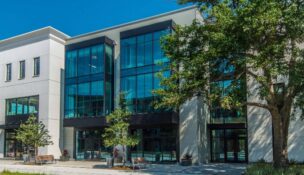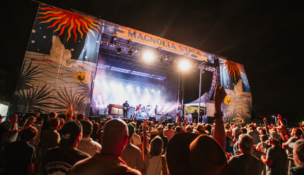Construction costs drive up IAAM price by $10M
Staff //December 20, 2018//
The International African American Museum must raise an additional $10 million after construction estimates put costs 20% higher than anticipated.
The museum reached its initial $75 million fundraising goal — $43 million of that for construction — in August, but President and CEO Michael Boulware Moore announced the additional amount at a news conference Thursday.
The $10 million figure is based on estimates from the project’s construction manager, a joint venture between Turner Construction Co. and Brownstone Construction Group.
%20zl.jpg)
Moore attributed the higher cost to inflation, steel tariffs and the region’s competitive market.
“We’ve read the papers and seen other projects locally experience significant increases, and so we knew that was coming,” he said. “But we’ve got really lots of momentum.”
Former Charleston Mayor Joe Riley, a member of the museum’s board, said the museum staff is “well on our way” to reaching that goal, however, with an excess of $1.5 million from its initial fundraising campaign and a second $1 million pledge from Anita Zucker, who also donated $1 million in 2015.
“I liken it to my days a long time ago when I was a runner,” Riley said. “And you’d run a 10K race and you’d be tired and drink some water or Gatorade or get a piece of fruit. Then in about a half hour, you’re ready to run some more. So we’re fit, in shape.”
Riley said the museum has also received word of two other pledges — $1 million from a “corporate partner” and $2.5 million from another donor — that are not ready to be publicly announced but will help the museum reach the $10 million goal.
He added, though, that he doesn’t want that progress to diminish the museum’s financial need or discourage people from donating.
“We know this will be a robust institution and so we will never have a problem with too much money raised,” Riley said. “But I feel very confident.”
Moore said the museum plans are still set to be presented to Charleston City Council in January, with groundbreaking anticipated for May. The museum is expected to open in summer 2021.
“We are closer now than we’ve ever been to breaking ground and to making this a reality,” Moore said.
Approaching the finish line
Moore said that it’s “heartening” for him, after four years as the museum’s CEO, to see the project come to fruition.
“We are working really hard to create something that will really make a big impact, that will affect people’s lives in very meaningful ways,” he said. “And the fact that we are about to break ground on creating that experience to be able to do that work is very wonderful.”
He added that he’s pleased that Riley is part of the project’s becoming a reality. The former mayor has been advocating and working on plans for the museum since 2000.
Moore credited the fundraising success that the museum has experienced over the last few years to Riley’s involvement.
“Mayor Riley is known and loved far and wide,” Moore said. “And I think that we’ve been able to get audience with folks who resonate with our message.”
Riley said that, unlike other projects that the region has embarked on, this one sticks out because of its national significance.
“Oftentimes, we build important institutions or initiatives to serve us, our region, to make quality of life more rich,” he said. “But here, because of our history, we have the chance to present to the citizens of America and beyond a place to come and honor African-American brothers and sisters’ ancestors, and to learn more about how America was formed.”
The museum will be built on the former site of Gadsden’s Wharf, where nearly half of all enslaved Africans brought to America arrived.
Moore likened the museum site to Ellis Island in New York, where 12 million immigrants entered the United States, according to the National Park Service.
“The circumstances of the people who landed there is very different than Ellis Island, but it is that one place where the vast majority of African-Americans can look to, to say that this is where our first American ancestors arrived,” Moore said. “So it’s a special place we’re building, and we’ve brought together an amazing team of architects and designers and staff.”
Regarding the staffing the museum will require when it’s up and running, Moore said he’s not sure what the employee count might be, but he said the museum will rely on volunteers to help keep the museum running. He said he was comparing notes recently with a colleague at the S.C. Aquarium and was “blown away by the number of volunteers that they have.”
“Luckily, we don’t have the kind of operation that requires us feeding fish and all that kind of a thing,” Moore said. “But we’re going to have a robust staff. We’re obviously being cost-effective and we’re going to be lean, but we’ll also have a variety of different local folks who volunteer and we’ll tap into their energy and contributions as well.”
t















